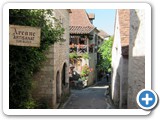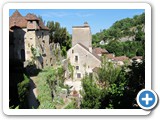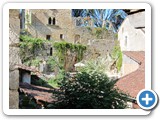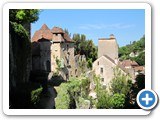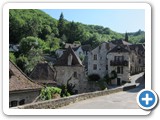Saint-Cirq-Lapopie is beautifully situated on the cliffs of the left bank of the Lot, about one kilometre before the Célé flows into the Lot.
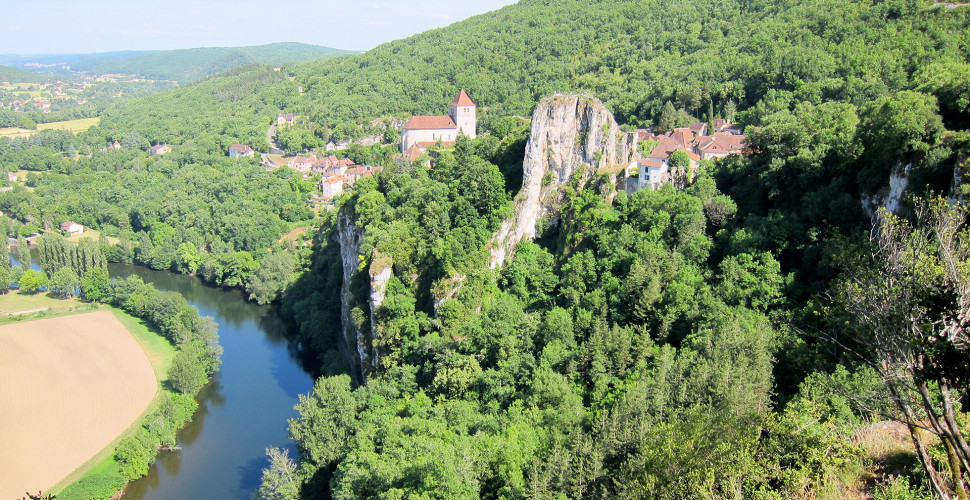
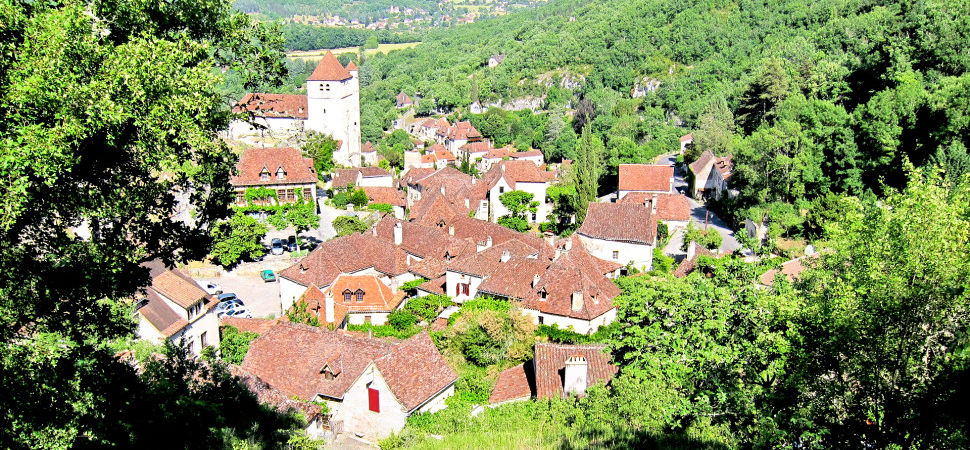
The steep alleys of the village are characterised by brick gabled houses from the 13th to 16th century. Many artists have settled in the village and offer their products. At the foot of the Lapopie rock, mills, locks and the harbour, as well as the towpath, remind us of the times of flourishing inland navigation on the Lot.
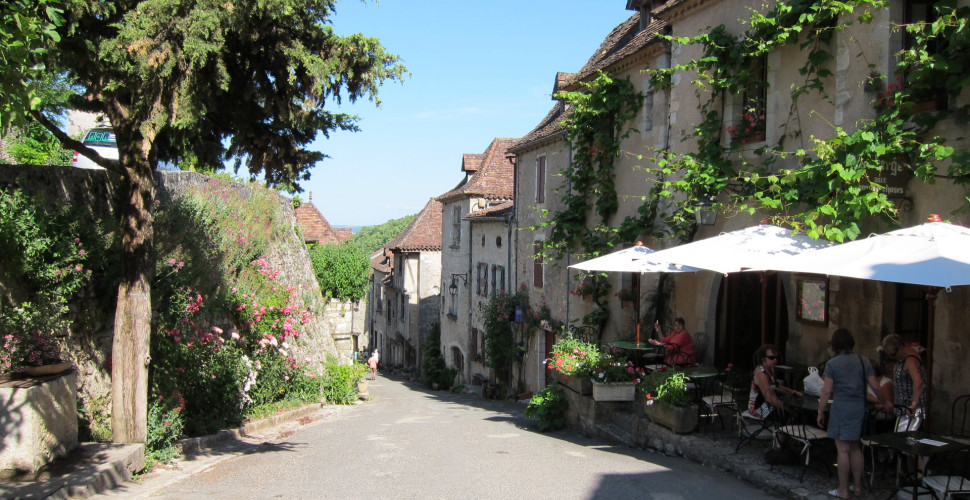
The Romanesque church from the 12th century is located below the castle ruins. The square bell tower and the apse still date from that period. The church was rebuilt in the 16th century. It is dedicated to the holy Cirq (Quiricus). See below
By the way: Lapopie is the name of the lords who ruled over the place. They were the protagonists of a history of sieges and devastating battles, until the 13th century, when the village was adorned with stately houses, a hospital, a marketplace, a church and, of course, a castle that provided shelter for famous noble families: Lapopie, Gourdon, Cardaillac, Hebrard de Saint-Sulpice ...

The church below the castle ruins. A turret leaning against the massive bell tower hides a spiral staircase.

The Célé trail (GR 651) crosses the Causses du Quercy to Concots before joining the GR 65 at the hamlet of Bach, between Limogne-en-Quercy and Varaire, before reaching Cahors.

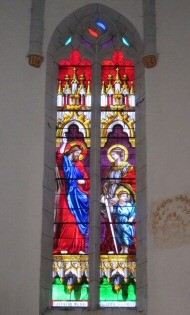
According to legend, Julitta was a rich widow from a noble family living in Iconium, today's Turkish city of Konya, who had converted to Christianity. During the persecution of the Christians she wanted to flee from her hometown to Seleukia with her three-year-old son Quiricus (Cirq). In the city of Tarsos, today's Tarsus, they were recognised as Christians and brought before the judge.
When the judge ordered them to be beaten with straps, the outraged, screaming child scratched the face of the judge, who wanted to heart them and convert them to himself.
Then he threw it from the judge's chair so that it lay dead, and had Julitta beheaded.
On the left: Statue in the left aisle, Right: window in the choir
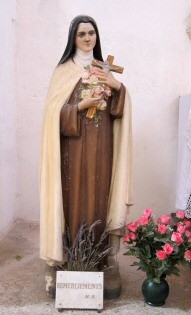

In St-Cirq-Lapopie, as is customary in France, Saint Thérèsa of Lisieux is also venerated. This already well-known (somewhat kitschy) statue stands on the ground on the right side of the church.
"After my death I want to make it rain roses", she said and is therefore represented with roses.
